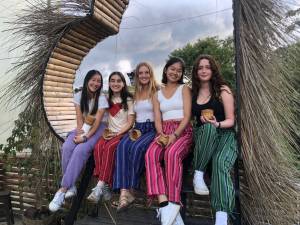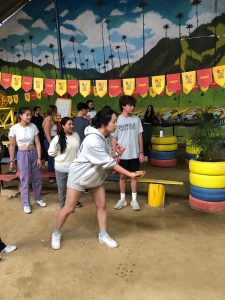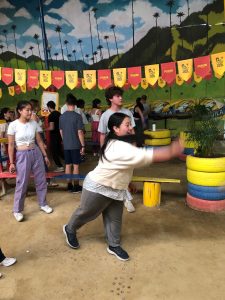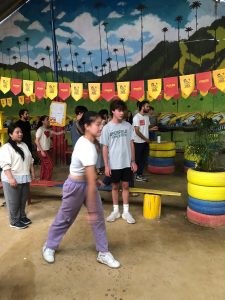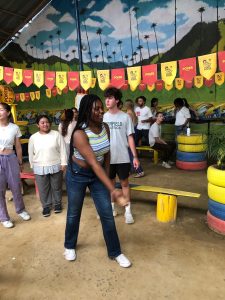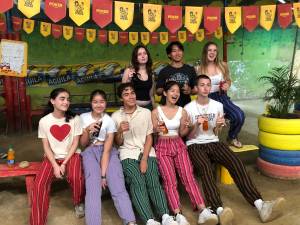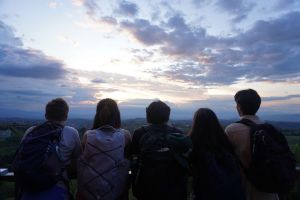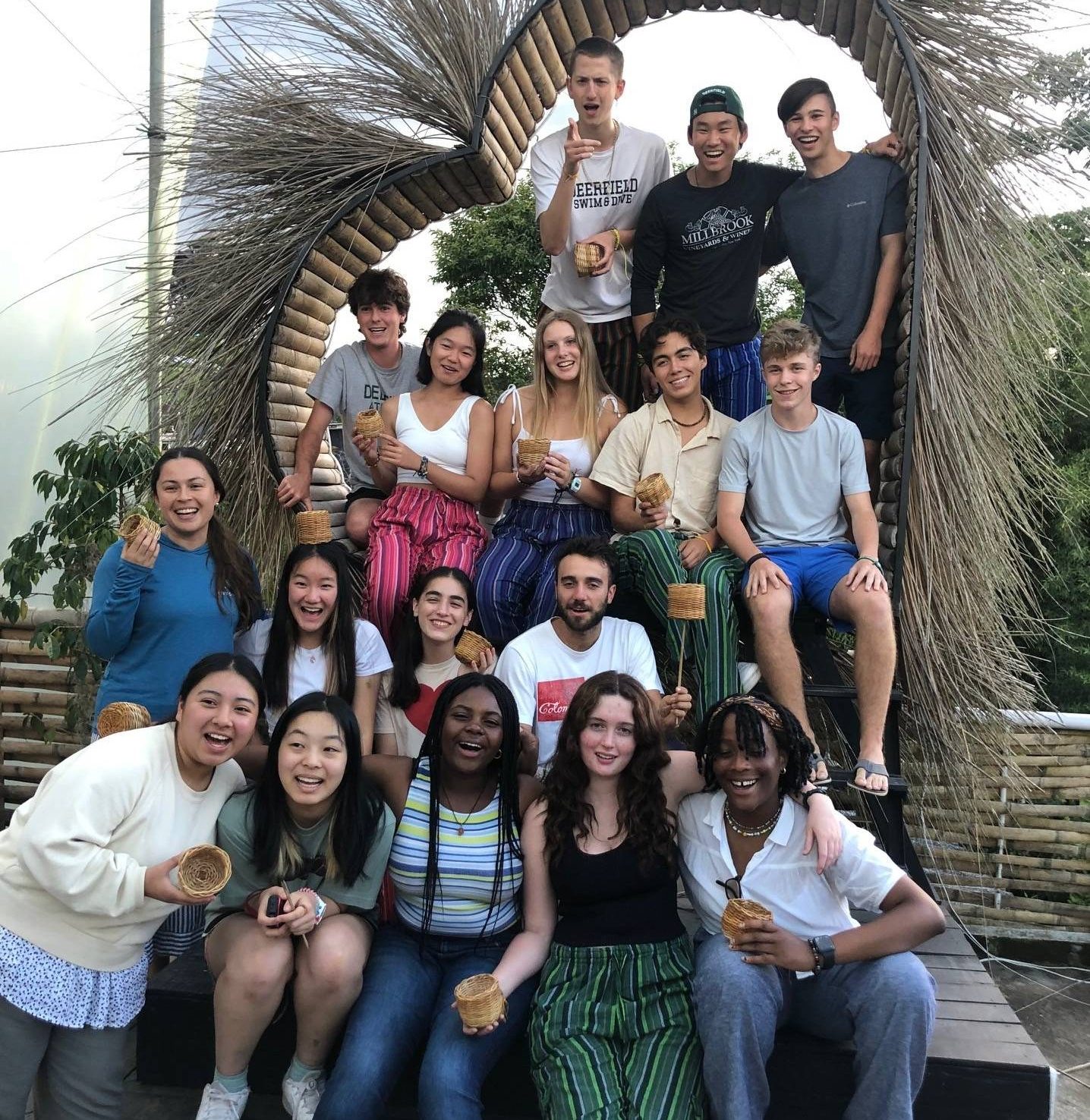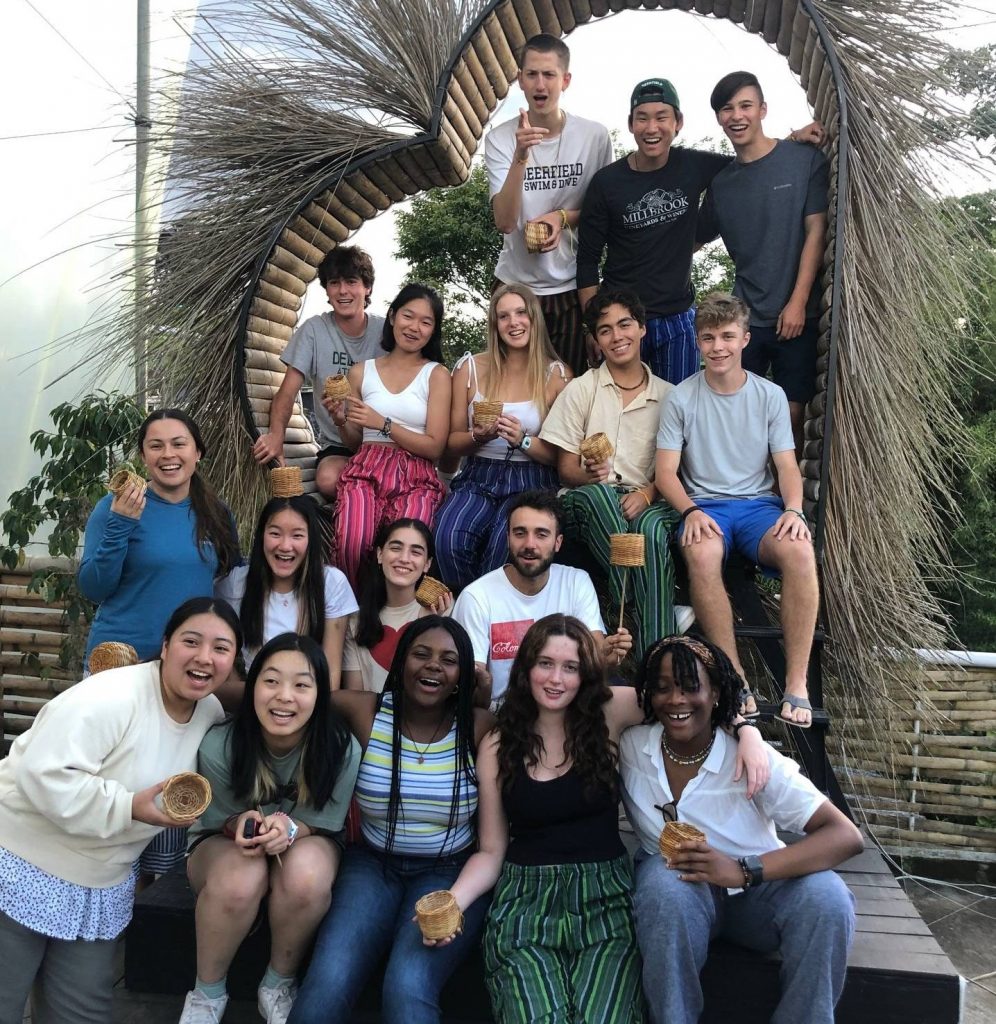Despite some strange encounters, Alice ’24, comes to appreciate the beauty of Colombia and its culture.
Quick summary of what we did today:
- We headed out in the morning to play a game called chico de tejo. It is a sport where players throw metallic discs called tejos at a slanted box filled with mud and four pieces of gunpowder. The goal is to accurately hit the gunpowder or land the tejo in the center of the four pieces of gunpowder. Depending on where the tejo lands or if it causes the gunpowder to explode, different points are awarded, and the team with the highest points wins. Unfortunately, our group, including Thayer, Ryan, and myself, did not really have a knack for the game, unlike Winston, Andrew, and Adaugo’s group.
- After the game, we went grocery shopping at a fruit shop and we later had a blindfolded-fruit-tasting activity back in the hotel. We tried seven different fruits: guayaba, guayaba manzana, lulo, maracuyá, granadilla, patilla, tomate de árbol, and curuba. A lot of them are absurdly sour, which I’m not a big fan of, but I’m surprised to notice that a lot of people liked the sour flavor. Granadilla is a popular one among all of us. Its texture is similar to passion fruit, with juicy and jelly-like pulp surrounding the seeds, but it is a lot sweeter than normal passion fruit. I also like tomate de árbol, although it is a controversial one among the group. Most people hated it, but I found its sweet and tangy flavor similar to a mix of tomato and passionfruit, which I both love.
- In the afternoon, we took a trip to the town of Filandia, located about 50 minutes away from Salento. Our main activity there was learning how to weave our own canastas (baskets) using a special type of vine called tripe perro. The process was a lot easier than we expected, and it was a wonderfully calming experience. We sat under the roof with soft music in the background and dedicated ourselves to weaving our own canastas while chit chatting with our friends. As we were wrapping up our canastas, I noticed that my canasta looked a little different from everyone else’s: mine looks a lot more circular while the walls of other people’s canastas are straight up. The person who taught us how to weave told me that how the canasta looks can reflect the weaver’s mindset: the more stressed they are, the tighter the canasta will be, and in my case, my canasta is more rounded because I put more tension when I weaved it.
Today was a really chill day that allowed us to immerse ourselves in Colombian culture and I want to take this opportunity to reflect on my stress that was reflected through my canasta. I think a big part of that comes from some strange encounters we have had when we were strolling around town. One of my friends, who happens to be Asian, was unexpectedly the star of a FaceTime call because of her “surprising” ability to speak English. I was called out as “does not look like is from America” with suspicious side eyes. I felt frustrated that these stereotypical thoughts and judgments are circulating so closely around us and that I could not change these individual’s preconceived and biased opinions no matter how much I tried to assert my identity or stand up for myself and my friends.
Despite these small moments of unease, our day in Filandia still held beauty and serenity. We enjoyed the beautiful sunset with the valley stretching far beyond our line of sight and merging seamlessly with the clouds painted orange. With each deep breath we took, we let the wind carry away the lingering stress, replaced by a sense of appreciation for the simple wonders of life.
